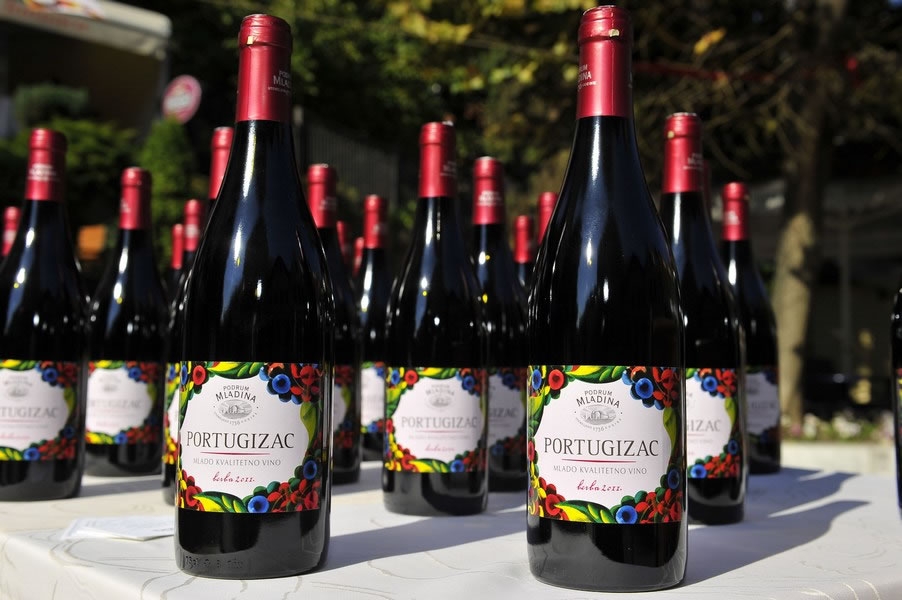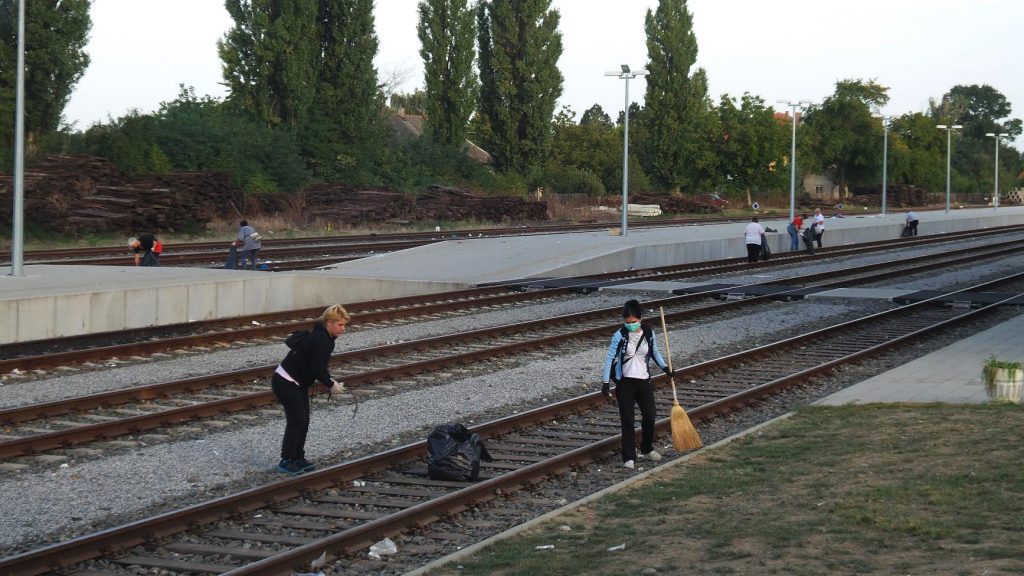
If you just can’t wait to try any new wine from this year’s harvest, and you happen to be in Croatia, I have only one word of encouragement for you: Portugizac.
Or whatever it is we are allowed to call it these days (we’ll come back to that point later). While not an indigenous Croatian wine variety, there’s a long tradition of producing Portugizac wines in almost all regions of continental Croatia. Blauer Portugieser is the name of the red variety in Austria and Germany, where it originates from. And, no, it basically has nothing to do with Portugal, although it used to be considered that it was brought to Central Europe from Portugal, but those claims have been disproven.
It ripens very early, usually in the August, and manages to collect quite a lot of sugar in its grapes in the short time (and the region where it grows is not too sunny anyway), and has nice acids and various berry flavours – raspberry, blackberry, blueberry. In Croatia, it is traditionally made into wine using the beaujolais nouveau method, ie. using carbonic maceration, anaerobic fermentation of the intact berry, resulting in strong fruit flavours without extracting bitter tannins from the grape skins.
The wine is fresh, fruity, doesn’t have high alcohols (around 11% usually) and is ready to be consumed 6-8 weeks after the harvest. And, yes, you counted that correctly, we get to drink some Portugizac very early in the autumn, in late October! Yes, that’s a few weeks earlier than the Thursday when the French say that “Le Beaujolais nouveau est arrivé!” Because of the method used to make Portugizac wine, it does not make much sense to let it age, since it does not have much potential to age well (as if we needed any excuse to drink it all in October and November, before the other wines arrive!).
Traditionally, it is drunk along purica with mlinci (turkey with a special hand-made type of pasta, a dish from the north-western part of Croatia), other “winter” meals (fattier and heavier, traditionally made in the region, often including sauerkraut) and the most notable association is with roasted chestnuts, an autumn favourite in Zagreb and western Croatia. The most notable producers are Mladina winery (the mass-producer makes quality Portugizac every year, their vineyards are on the slopes of Plešivica), PZ Plešivica, Golubić winery (their 2015 Portugizac won a gold medal at an international event in Hungary), Gregorić winery etc. All those producers are from Plešivica region, and Krauthaker, a well-known Kutjevo graševina maker also ventured into Portugizac creation, and has achieved interesting results. It’s worth noting that if the grapes are harvested later, and traditional method applied, more “serious” and complex wine with great aging potential can be created on better years, and Croatian producers are attempting to get such wines as well in the past years, as well as some sparkling and rose wines made from Portugizac grapes.
Oh, and yes, we promised to talk about the name. Portugizac or Portugizec is what the variety has been called for two centuries. And then, when Croatia entered the EU, due to a clerical oversight (or whatever really happened), it was no longer allowed that the Croatian wine producers label their wine “Portugizac”. In Austria and Germany it’s called Blauer Portugieser, in Slovenia Modra Portugalka, in Czech Republic it’s Modrý Portugal – and all of those are allowed, although the given reason to the Croatian ban is that the name is to similar to Portugal, the state. Obviously, the ban is very odd, and while most producers did call their wine something else in the first year when it was imposed (Purtugizec, most frequently), this year I see that almost no-one seems to call the wine anything else but just Portugizac.
So, autumn in central Croatia is wonderful, with the colourful leaves (and fog – just kidding!), and to make it even nicer, get yourself some roasted chestnuts and a glass or two of Portugizac. Neither of those will be around for long, so grab an opportunity when it presents itself. We will certainly announce some of the many events that will be held in and around Zagreb, celebrating our first wine of this vintage.












